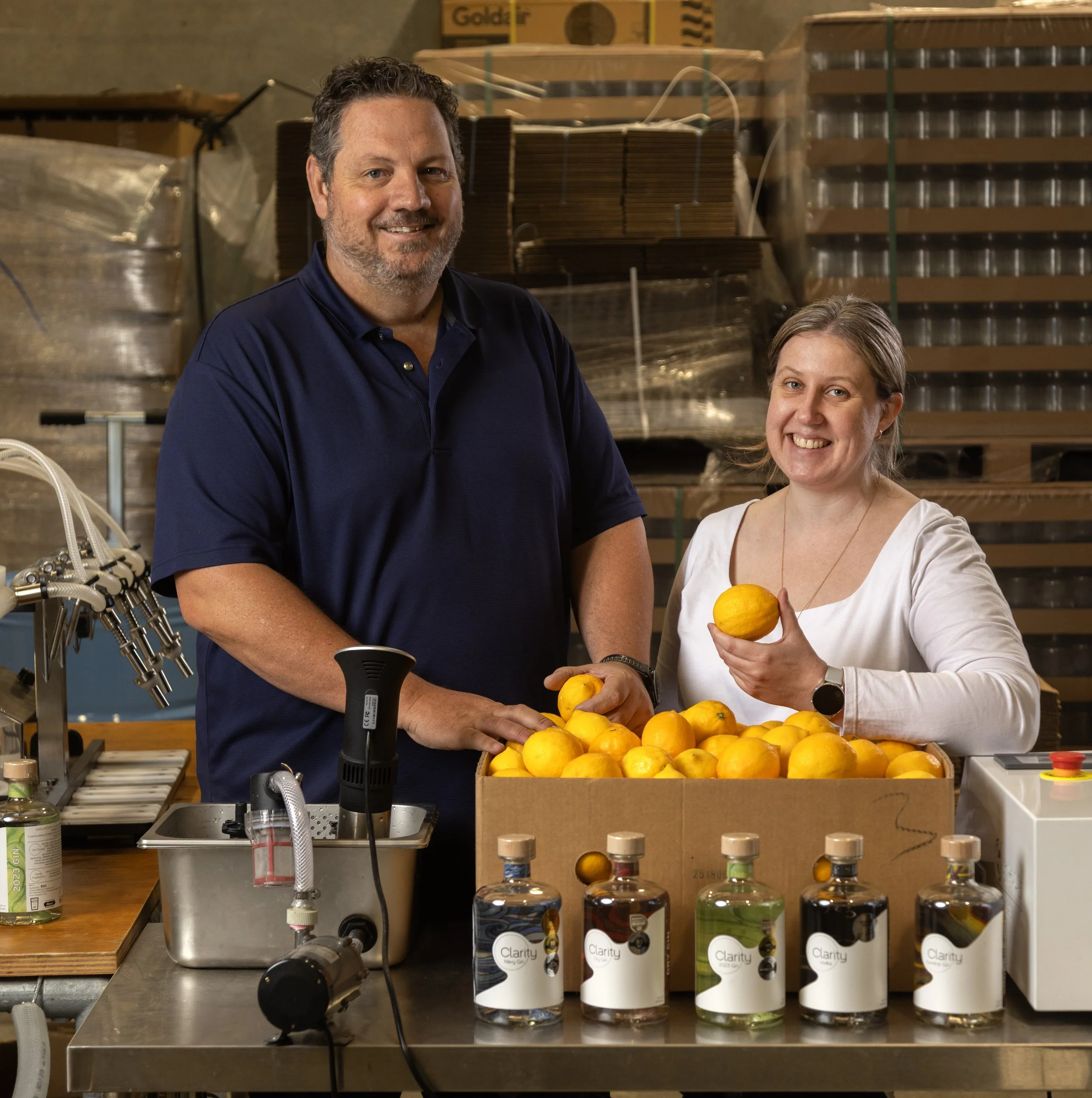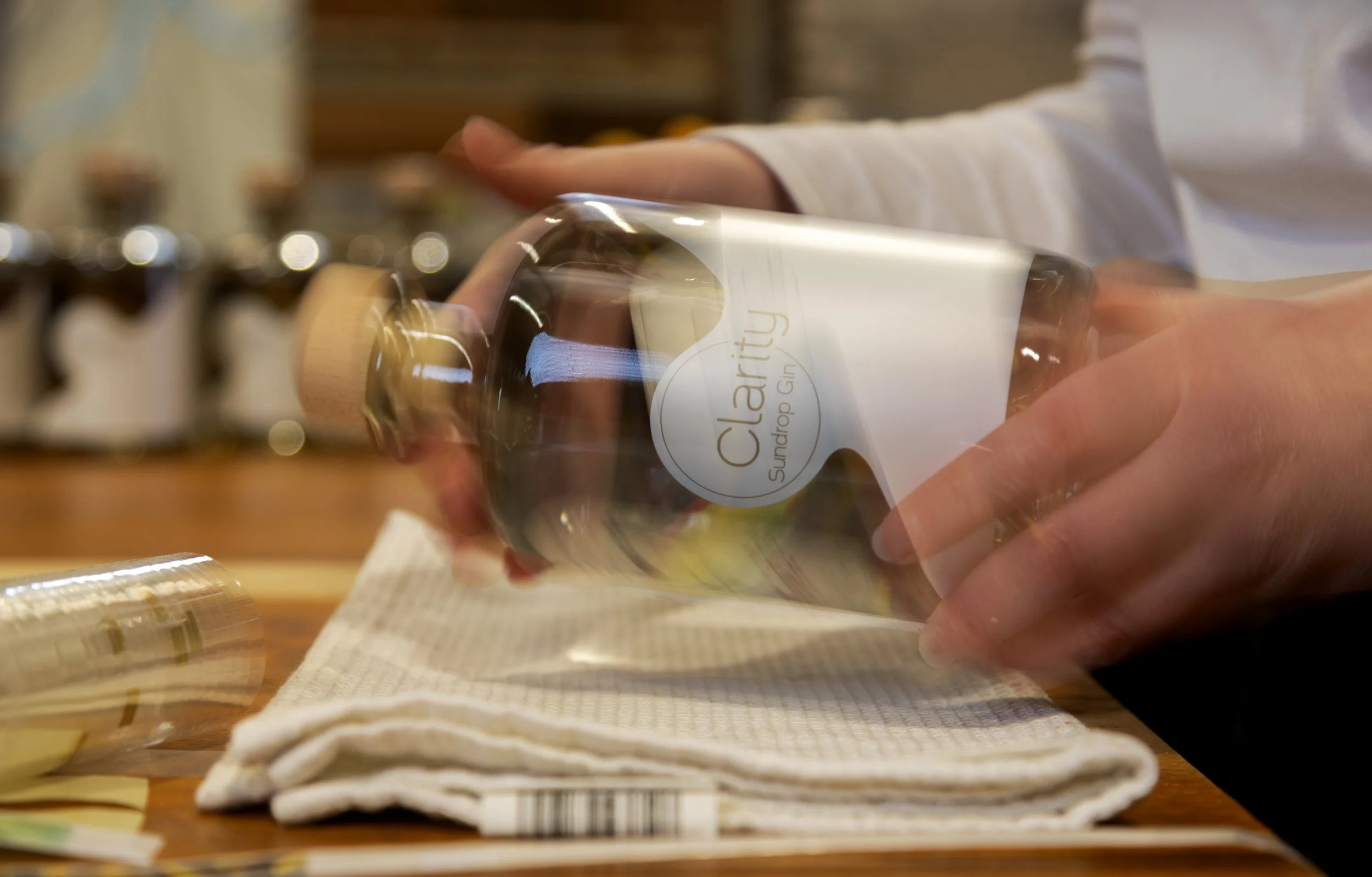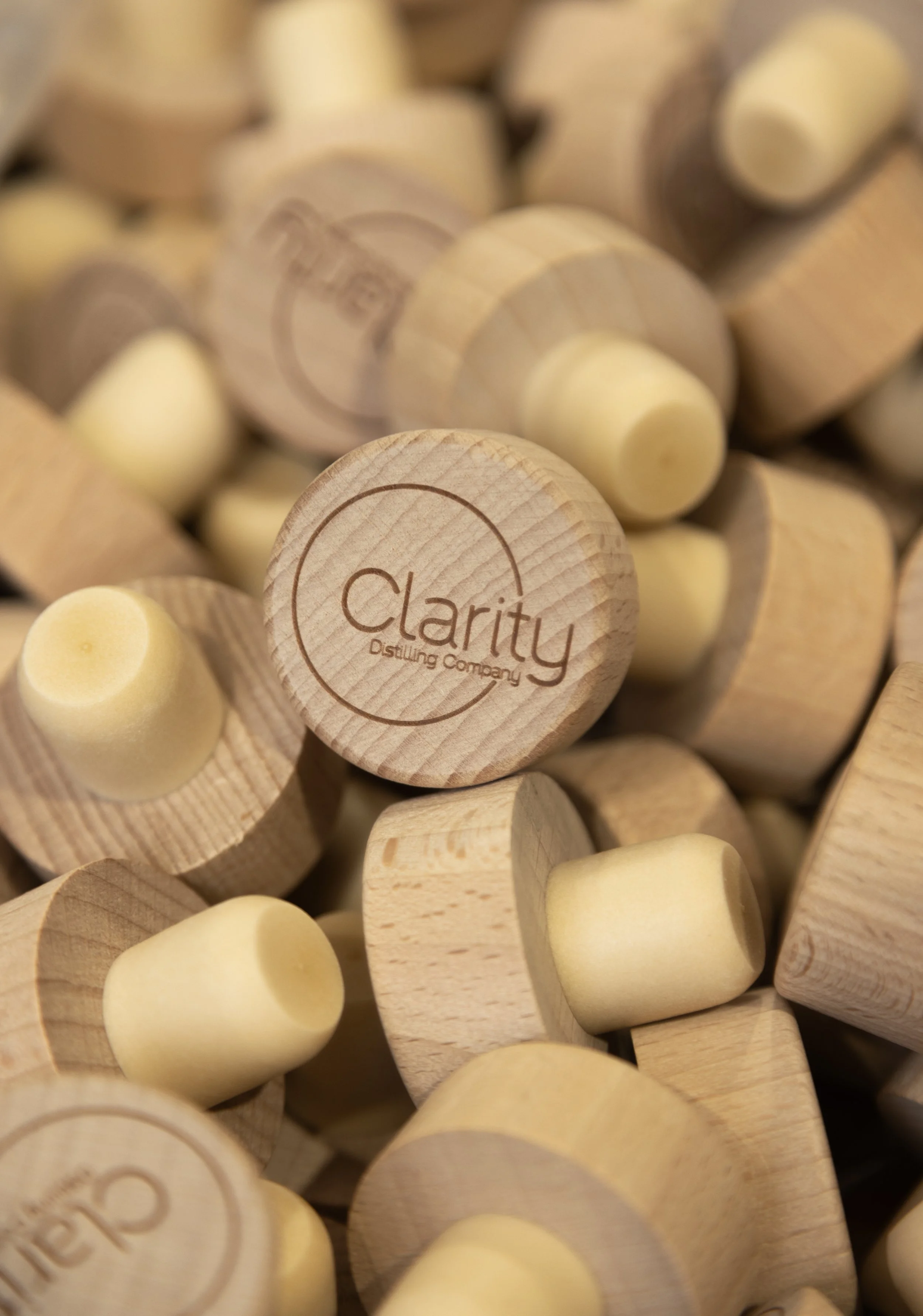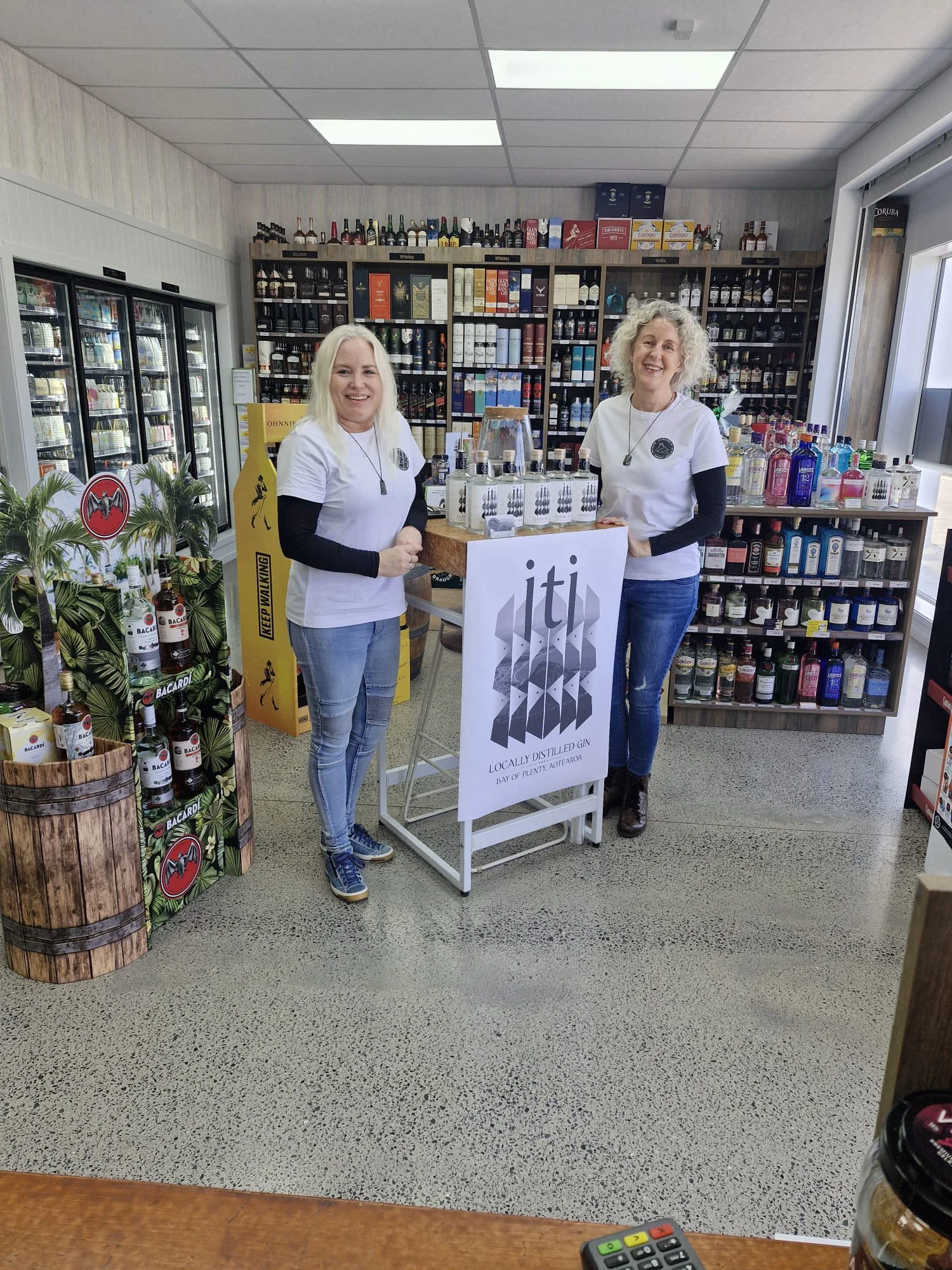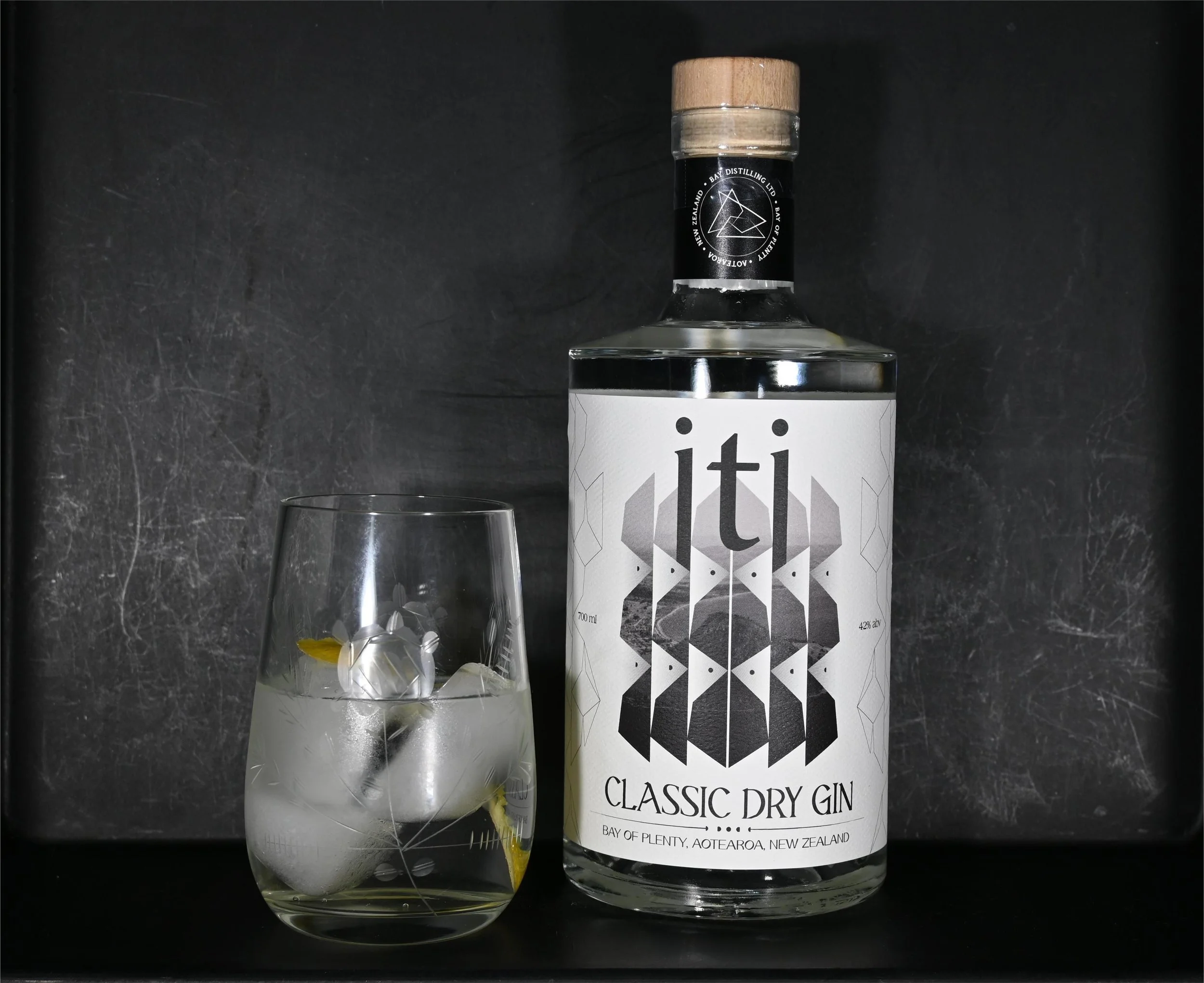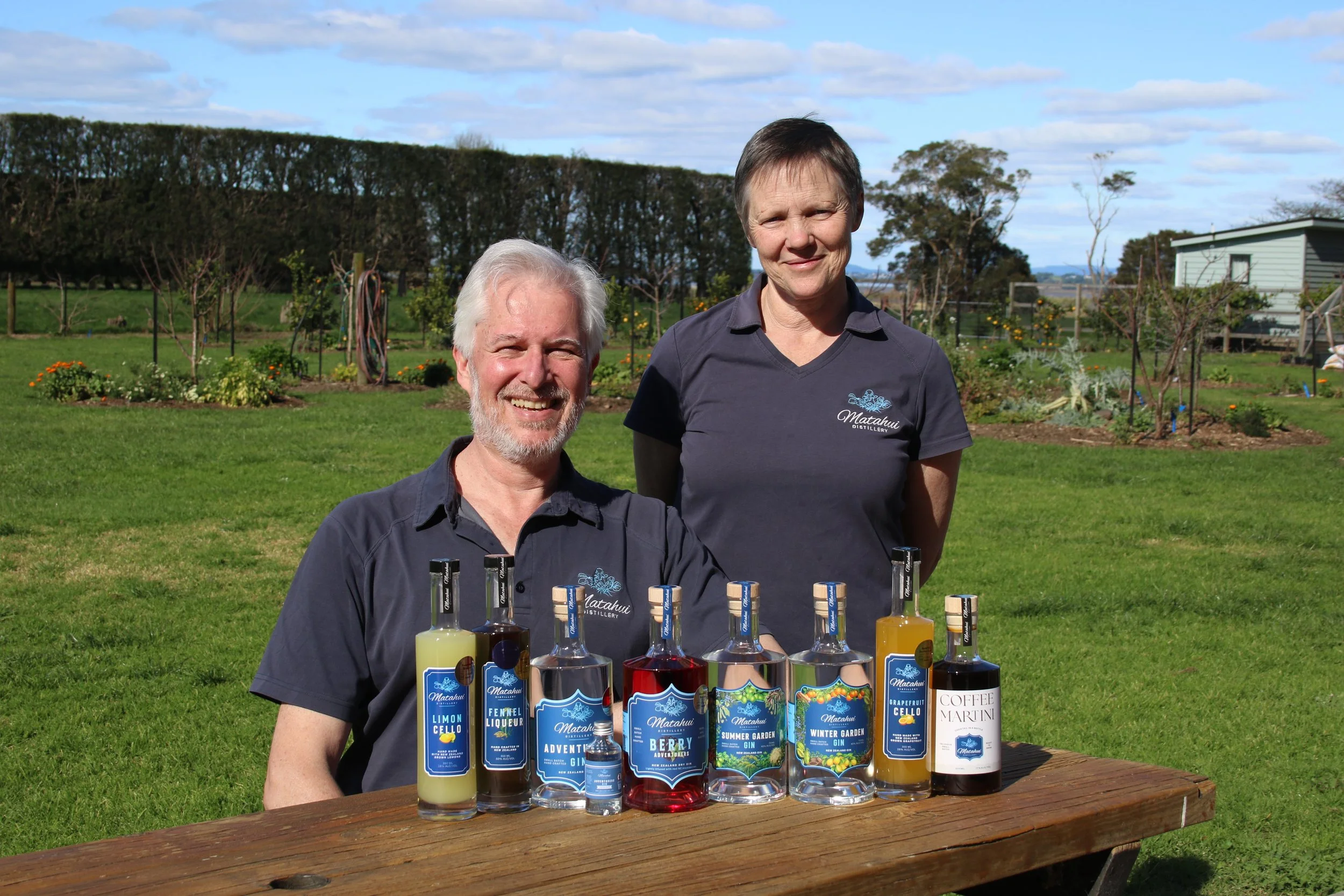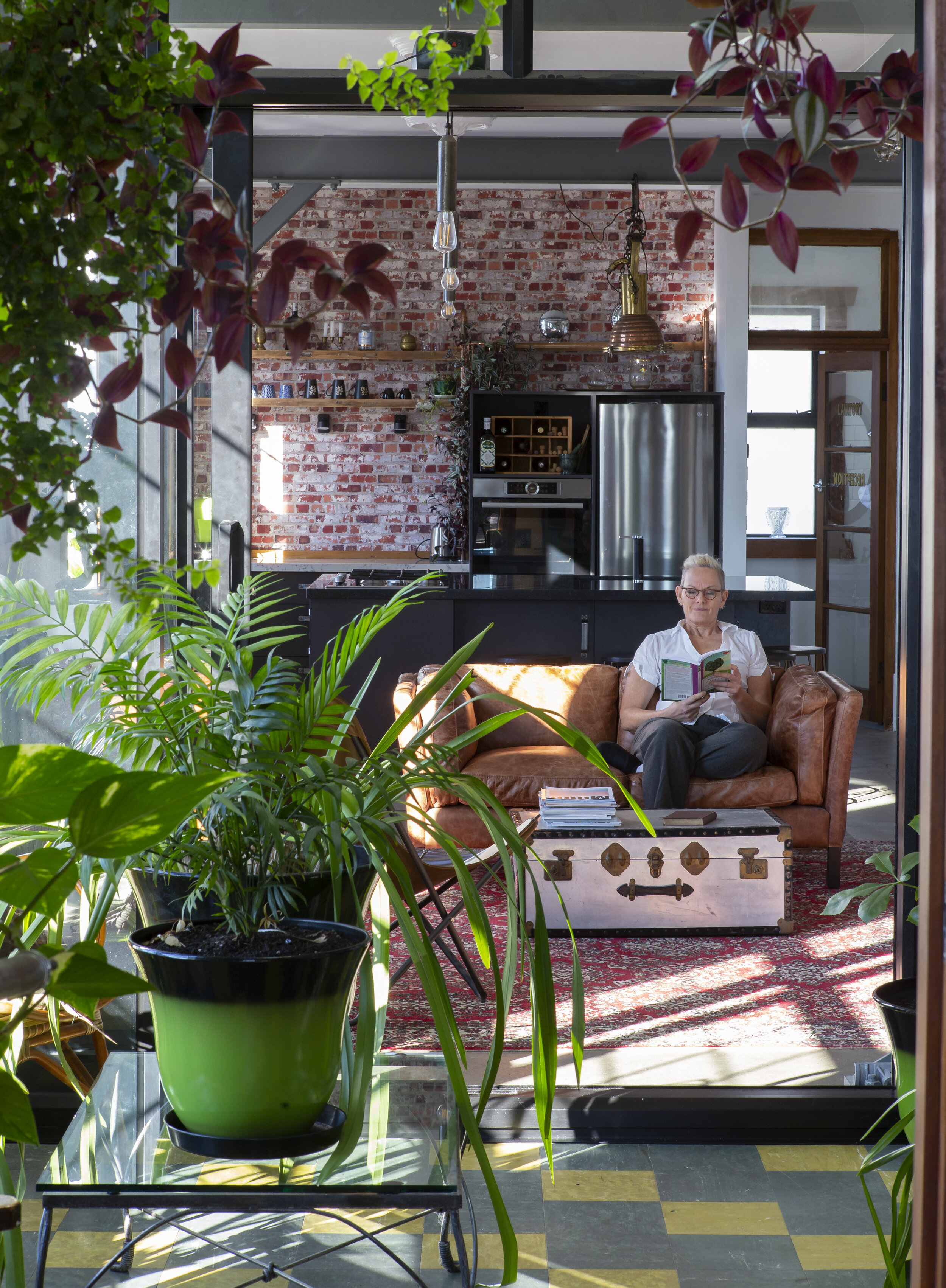Raising spirits
How three Bay distilleries are redefining New Zealand gin.
How three Bay distilleries are redefining New Zealand gin.
PHOTOS Alan Gisbon + Erin Cave + Supplied
George White and Stephanie Downer's successful Clarity Distilling Company started as a hobby.
It might seem unlikely, but behind the roller doors of a nondescript unit in Tauriko’s commercial estate, two friends are crafting one of the world’s best gins. Just 25 minutes away in another small space in Ōmokoroa, a similar story is unfolding as two friends blend botanicals to bring their award-winning gin to life. And just over the hill, in Matahui, gin drinkers can bottle their own creation - and become award winners themselves.
Far from being on the rocks, gin is obviously continuing its recent resurgence. The clear spirit has gained popularity thanks to its clean herbal aromatics and botanical complexity. Because gin can be produced relatively quickly, small-batch makers have embraced it as a space for creativity, developing unique signature styles and exciting flavour profiles. Juniper remains the foundation, of course, but now it’s not unusual to find exotic ingredients like mānuka, licorice, or Szechuan pepper in the mix, adding bold new twists to traditional flavours. Small independent distilleries in the Bay of Plenty are at the forefront of the gin revolution here in Aotearoa.
Clarity Distilling Company, Bay Distillery and Matahui Distillery are three local producers who are lovingly crafting world-class gin, right here in the Bay. While their approaches to gin differ, the three small batch distilleries share plenty in common. Each is run by a pair of hands-on founders who manage every part of the process themselves, from developing recipes through to distilling, bottling and branding.
Their gin may be internationally recognised now, winning back-to-back golds earlier this year, but Clarity started as a hobby for George White only a couple of years ago. It was something he’d do in his downtime away from the childcare centre he and friend Stephanie Downer had started.
“I’ve always been a guy that likes to cook at home and try recipes and create flavours,” George says. “Gin is open. There are no restrictions. You can do whatever you want. You can put anything into that still and create any flavour you want.”
It was George’s love of cooking that would become Clarity’s secret ingredient. Rather than traditional methods, which see all the botanicals distilled together, the pair instead steep each ingredient individually.
“When you make a gin, it’s like cooking, except you’re dealing with botanicals,” George explains. “When you cook a stew, you don’t throw your meat, herbs and everything in and shut the lid. You layer it. So why would making gin be any different to that?”
This meticulous process of distilling each element separately allows them to exactly control how much flavour is extracted and then added to their blend.
“We get the best out of every single botanical,” George smiles. “Because all that’s in our gin is the botanicals. That's where all of the flavour comes from.”
It’s proven to be a winning formula. In May, their Clarity Navy Gin was awarded ‘Spirit of the Year New Zealand’ at the prestigious 2025 London Spirits Competition. They also have multiple Double Golds from San Francisco, and took home ‘Best London Dry’ and ‘Best Navy Strength’ at the NZ Spirits Awards and NZ Small Batch Gin Awards this year.
Just as much care has gone into Clarity’s look, with Stephanie handpainting the label’s distinctive artwork and even illustrating the ingredient list.
“That’s part of our ethos,” Stephanie says. “Essentially, if it's not on the bottle, it's not in the bottle.”
The operation has quickly scaled up, now with six distillers and upgraded bottling systems. But George says they don’t want to grow for growth’s sake.
“We want to be a household gin, not a special occasion gin,” he says. “We want to be affordable. If people are going to buy gin, we'd much rather let them buy a New Zealand gin.”
Gin makers Karen Hawkins and Denise Roscoe.
It’s a similar story over at Bay Distilling, where gin makers Karen Hawkins and Denise Roscoe launched their gin after running a coffee caravan in Ōmokoroa.
“We both like coffee, so we had a coffee business,” Karen says. “And then we sold that and thought, ‘what else do we like?’ Well, we quite like gin...”
They spent a year in the garage perfecting their dry gin recipe, encouraging friends to give honest feedback, though it was mostly glowing.
“We like a classic dry gin and really wanted to get that right,” Denise says.
Their gin iti recently took silver at the NZ Small Batch Gin Awards. Now in a commercial space, they handle everything from distilling to packing themselves, with a little taste-testing help from Karen’s husband. Their
branding is rooted in the local landscape, with a label designed by Karen’s daughter.
Meanwhile, just outside of Tauranga, Matahui Distillery offers something unique: a chance for people to create their own gin, and potentially win awards for it.
“Late last year, people who had come through our gin lab were asking for feedback on their creations,” says co-founder Paul Horak. “That’s where the Matahui Gin Lab Awards came from. It’s a bit of fun, but with proper base testing and scoring of their recipes.”
Matahui Distillery’s Paul Horak and Angela Howard with their handcrafted spirits.
The gins are created through blending pre-distilled botanical spirits, a process Paul says is used by commercial distillers like Hendrick’s. “It’s actually the best way to develop a recipe,” he explains. “You can quickly see what works, then adjust quantities until it’s perfect.”
Although their signature Adventurers Gin earned silver at the NZ Spirits Awards, the focus at Matahui is on the customer experience. “We’re not aiming to become a big factory,” Paul says. “Selling direct allows us to stay small, and our workshops help fund our own small-batch experimentation.”
The experience has evolved too. Originally participants distilled on-site, but council restrictions prompted a shift in method. “In hindsight, it pushed us to improve,” Paul says. “Now we focus on flavour — people still walk away with a gin they designed, but the quality is even better.”
They’re also working on home-blending kits, so people can recreate the experience themselves. “It’s something we want to launch in time for summer,” he adds.
While many come to Matahui for birthdays or hens’ dos, Paul says it’s just as often individuals with a curiosity for gin.
“New Zealanders are still discovering gin. Every gin is unique, and that surprises a lot of people. But once they learn more about it, they’re hooked.”
These three small-batch distilleries are proving that success in the competitive spirits market doesn’t require big investors or a corporate machine. Instead, it’s passion, ambition and a classic Kiwi ‘can-do’ attitude that are putting them, and the Bay, on the map.
Gin-gin!
Hayley Barnett toasts to a deliciously novel local experience.
Hayley Barnett toasts to a deliciously novel local experience.
photos Erin Cave
Who doesn’t enjoy a good gin? Floral, spicy, citrusy, nutty, sweet – there’s one to suit everyone these days, but making your own brings the appreciation to a whole new level.
Matahui Distillery in Aongatete offers gin lovers the experience of creating and bottling their own unique gin – from choosing your own botanicals, through to naming and labelling your creation. Before heading there to experience it for myself, I’d imagined making gin would be a time-consuming process and I’d have absolutely no idea what I was doing when it came to choosing which flavours go with what. I can barely cook. It turns out you can’t really go wrong. Not at Matahui anyway.
Gin enthusiast Shelley Broadbent leads our group of intrigued soon-to-be-mixologists and first educates us on the complexities – and simplicities – of the making process. Each station is set up with beakers and various measuring apparatuses, reminiscent of high school science class, only a lot more fun. Though the teenage trauma still lingers for me, Shelley assures us it’s a straightforward process – and it is.
Taste-testing the botanicals.
Pick your botanicals, mix your alcohol and water, then add everything to your distiller. You do get some guidance, of course. When it comes to choosing botanicals, it’s important to know that juniper berries usually make up around 80 percent of a gin profile, although these days it’s common for gin to include less juniper, to make way for other fanciful flavours. Then it’s wise to use coriander seeds, orris root and angelica root to get a well-rounded flavour profile. Some distillers use crushed and roasted coriander seeds, but we’re using them whole. After that, it’s a free-for-all to do as you please. Citrus is highly recommended but not essential. We play it safe and go for fresh lime peel. Next, we add bold, daring horopito, macadamia and liquorice, feeling as though we’re living on the edge.
During the distillation process, we walk around placing our fingers under other distillers (invited of course), to taste and see if we can recognise where the flavours come in. It’s fascinating to see how each taste combines with the others before it.
Angela takes us on a tour through the gardens.
One of the best things about Matahui is that they grow their own herbs, fruit and vegetables, offering up the very real experience of farm to plate. While our gin is distilling, we take a walk around the garden as Angela Howard, co-owner with husband Paul Horak, gives us a rundown on various flavours and where they come from.
Back in the lab, Shelley gets us started on the bottling process. Although she doesn’t own the place, it’s her we have to thank for our foray into gin distilling. She’s the one who twisted Angela and Paul’s arms to set up the distillery. Angela made a hobby out of turning alcohol into liqueur and Paul enjoyed experimenting with home distilling. They often talked about growing their own botanicals and turning their hobbies into a commercial business, but it took Shelley’s infectious positivity and persuasion to convince them to turn their dreams into reality.
Paul, Angela and Shelley.
A year ago, they invested in a state-of-the-art still to help them produce the highest-quality gin possible, and came up with their own brand, Adventurers Gin. Today, all three welcome groups onto their farm to try their hand at distilling and sample the various liquors on offer. Sharing their passion with locals and visitors is a dream come true for the trio, but they say they’ve only just started their adventure.
Creative character: writer and poet Stuart Greenhill and the Fenton Arts Collective
Writer and poet Stuart Greenhill of the Fenton Arts Collective in Stratford talks to UNO.
PHOTOS Andy Jackson and Jane Dove Juneau
UNO: What a beautiful building you are housed in. How did you find it and what was the journey to restoration?
Stuart Greenhill: My partner Jo Stallard was looking for a heritage building to save. In 2016, she offered a ridiculously low amount for the Egmont Chambers building in Stratford, which was earthquake-rated 17%. It was accepted. The building was not listed on Stratford’s District Plan, so no funding was available. Other than that, it was a fantastic journey. We had enough experience from previous projects to ensure the outcome was what we wanted. The renovation won an Architecture Award in 2019 for Renovations and Additions. The building fascinates people, and many come just to see it.
What is the Fenton Arts Collective?
It is a collective of our passions and interests: Art, history, gin and espresso. We are 310 metres up a mountain, so our aspirations are just as high for each of them. The Collective offers people something unique, something intimate, something historical and modern; it offers a genuine experience.
Your partner Jo Stallard is the curator and artist-in-residence. What is Jo's artistic background, and what does she paint?
Jo comes from an art history background and is a portrait artist. She works in the traditional painting technique of “grisaille” or “dead painting” to traverse the landscapes of the human face and body. Looking, seeing and perceiving are the semantics of what a face has to give, share or provoke, and those are the landscapes she loves. So people come to the Collective, grab a coffee or gin from downstairs, and visit Jo’s working studio upstairs -- and maybe even chat about a commission.
Refreshment plays a strong role in your building; we hear gin and espresso coffee flow freely! Tell us more.
To survive in the provinces, businesses require diversity. Coffee, retail, and an art gallery were great, but we needed something more. Making gin is like writing. Botanicals are characters; each brings a different personality, so it was simply a matter of creating fantastic stories. People hear those when they book a gin tasting with me. Our espresso bar uses Proof & Stock coffee, made by our daughter, Adrianna, and offers high-quality healthy options including gluten-free and keto. And Tauranga celebrity Chef Ken Greenhill creates a monthly five-course degustation for us. They are so popular we have a waiting list.
What's your connection to Tauranga?
My brother’s been here since 1997, and Jo and I set up Deckchair on Marine Parade with him in 2007. We sold in 2010, travelled for a bit, and were approached in 2013 to establish Quantum Vis Eatery on Cameron Road. We still have a connection to the Bay, having formed many friendships over those years, and are thrilled that our gin is now carried by Mount Wine Barrel, Maunganui Rd and Fife Lane Restaurant.
And on top of all that, you're a published author! What have you written?
Dante Fog was published by Austin Macauley Publishers in London last year. It is autobiographical fiction (yes, that is a genre). The mother in the novel tells her son, “There are no better observers of life than artists.” I totally agree. Artistic license takes life and makes it art. That’s why I write poetry and prose and make gin and Jo paints. There is a beautiful complexity in discovering and understanding the layers in the mirror looking back at us. Our art attempts to express it so does the character Dante Fog.
What does the future hold for the Fenton Arts Collective?
There’s pressure to grow, but the distillery will remain boutique and so will the Arts Collective. Our gallery is booked for 2021, I am contracted to Austin Macauley Publishers for my next book, and Jo has two exhibitions this year. The future will be busy.

